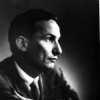Rudolf Arnheim

Rudolf Arnheim
Rudolf Arnheimwas a German-born author, art and film theorist, and perceptual psychologist. He learned Gestalt psychology from studying under Max Wertheimer and Wolfgang Köhler at the University of Berlin and applied it to art. His magnum opus was his book Art and Visual Perception: A Psychology of the Creative Eye. Other major books by Arnheim have included Visual Thinking, and The Power of the Center: A Study of Composition in the Visual Arts. Art and Visual Perception was revised, enlarged...
NationalityGerman
ProfessionArtist
Date of Birth15 July 1904
CountryGermany
Man's striving for order, of which art is but one manifestation, derives from a similar universal tendency throughout the organic world; it is also paralleled by, and perhaps derived from, the striving towards the state of simplest structure in physical systems.
The absurd consequences of neglecting structure but using the concept of order just the same are evident if one examines the present terminology of information theory.
Furthermore, order is a necessary condition for making a structure function. A physical mechanism, be it a team of laborers, the body of an animal, or a machine, can work only if it is in physical order.
Today we no longer regard the universe as the cause of our own undeserved troubles but perhaps, on the contrary, as the last refuge from the mismanagement of our earthly affairs.
Since mechanically obtained randomness contains all kinds of possible permutations, including the most regular ones, it cannot be relied upon always to exhibit a pervasive irregularity.
A good documentary or educational film is not raw experience. The material has passed the mill of reason, it has been sifted and interpreted.
It would be most wholesome if for at least twenty years art historians were forbidden to refer to any derivations. If they were not allowed to account for a work of art mainly by tracing where it comes from, they would have to deal with it in and by itself--which is what they are most needed for.
The experienced physician, mechanic, or physiologist looking at a wound, an engine, a microscopic preparation, "sees" things the novice does not see. If both, experts and laymen, were asked to make exact copies of what they see, their drawings would be quite different.
Some popular quotations smell of airless closets. They exhale the stale imagination of the intellectual lower middle class. "Suspension of disbelief" has become one of them. Dressed up as a scintillating double negation, it serves the pedestrian notion of art as illusion.
Would there be any truth in saying that psychology was created by the sophists to sow distrust between man and his world?
Television is a new, hard test of our wisdom. If we succeed in mastering the new medium it will enrich us. But it can also put our mind to sleep. We must not forget that in the past the inability to transport immediate experience and to convey it to others made the use of language necessary and thus compelled the human mind to develop concepts. For in order to describe things one must draw the general from the specific; one must select, compare, think. When communication can be achieved by pointing with the finger, however, the mouth grows silent, the writing hand stops, and the mind shrinks.
Order is a prerequisite of survival; therefore the impulse to produce orderly arrangements is inbred by evolution.
The clarification of visual forms and their organization in integrated patterns as well as the attribution of such forms to suitable objects is one of the most effective training grounds of the young mind.
A cloud can look like a camel, but a camel is unlikely to look like a cloud. This is so because the signifier must be able to stand for the whole category of the signified. The cloud looks like all camels, but no camel looks like all clouds.